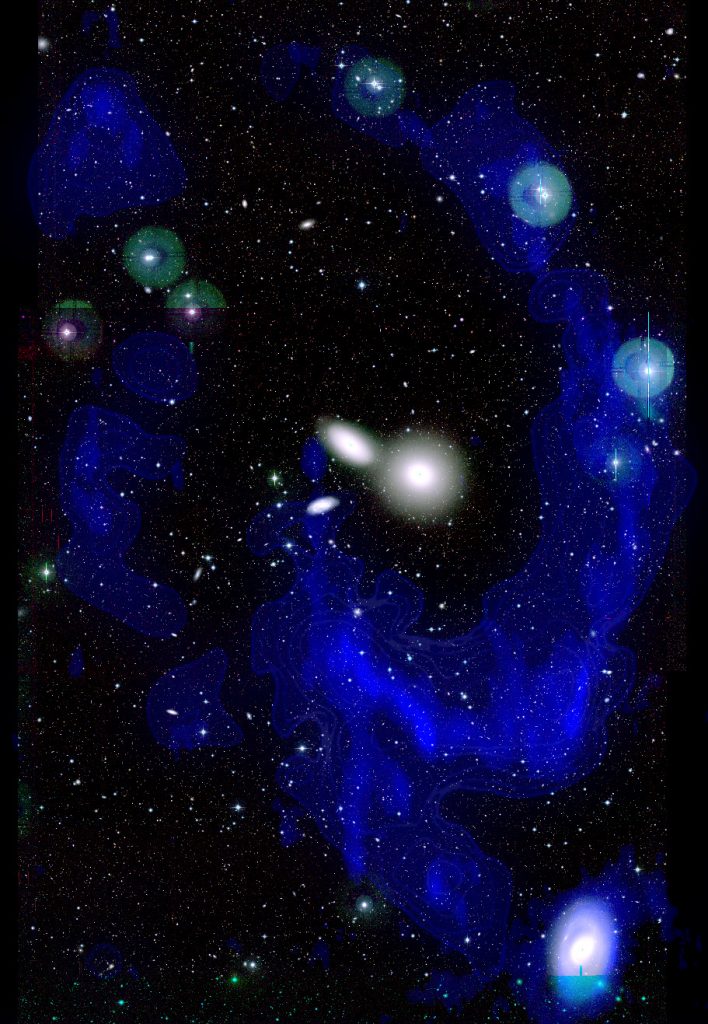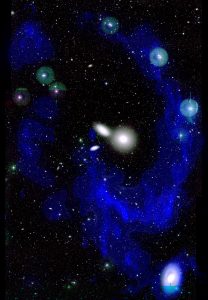The giant gas ring in Leo, formed when two galaxies collided
An international team led by astrophysicists from the Lyon Observatory (CRAL, CNRS/INSU, Université Lyon 1) and the AIM laboratory (CEA-Irfu, CNRS, Université Paris 7) has just shed some light on the origins of the giant gas ring in Leo. The astrophysicists were able to detect an optical counterpart to this cloud, which corresponds to stars in formation, using the Canada-France-Hawaii telescope (INSU-CNRS, CNRC, U. Hawaii). The scientists then carried out numerical simulations on the supercomputers at the CEA and suggested a scenario for the formation of this ring. This involved a violent collision between two galaxies. The researchers were able to identify the galaxies involved in the collision and estimate the date of impact. This discovery supports the assertion that the gas in the ring is not primordial, but of galactic origin. This work was published in Astrophysical Journal Letters.

Numerical simulation of the formation of the giant gas ring in Leo resulting from the collision between two galaxies, NGC 3384 and M96. The gas is shown in blue, the stars in yellow/white. The timescale shown in the lower right-hand corner shows that, after a billion years, the structure and size of the ring are correctly reproduced. Credit: Lyon Observatory and AIM Laboratory. (If the video does not appear, click here).
For more information : see the full text in French
Contact: Pierre-Alain Duc (CEA)
« A collisional origin for the Leo ring»
Michel-Dansac L. (1), Duc P.A. (2), Bournaud F. (2), Cuillandre J.C. (3), Emsellem E.(1), Oosterloo T. (4), Morganti R. (4), Serra P. (4), Ibata R. (5), Astrophysical Journal Letters, 717 (2010) L143-L148, pour une version electronique arXiv:1005.4208
(1) Lyon Astronomical Research Centre (CRAL: CNRS, Université de Lyon 1, Ecole Normale Supérieure de Lyon, Observatoire de Lyon-INSU),
(2) Astrophysics, Instrumentation and Modelling Laboratory (AIM: Université Paris Diderot, CNRS, CEA),
(3) Canada-France-Hawaii Telescope (INSU-CNRS, CNRC, U. Hawaii),
(4) ASTRON, Netherlands Institute for Radio Astronomy,
(5) Strasbourg Astronomical Observatorye (INSU-CNRS)
See: the text of the CNRS/INSU-CEA press release
the press release from CFHT
See also: – “No more starless galaxies?” , November 2007


